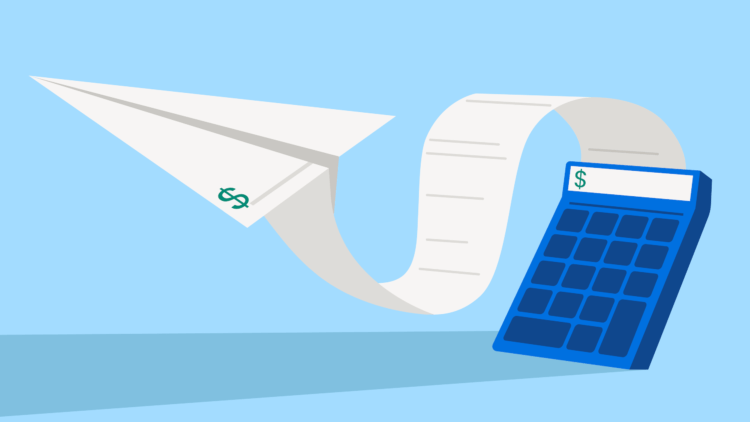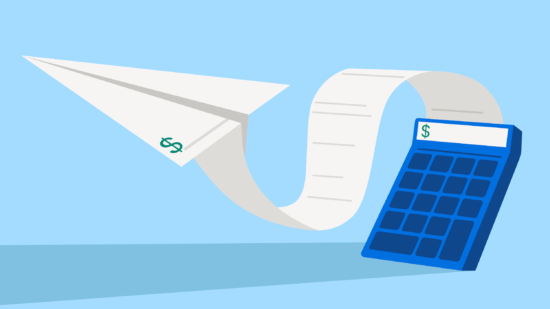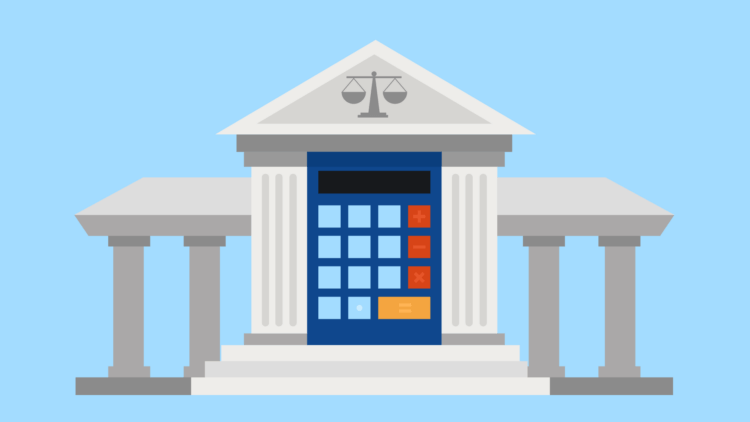You’ve invested your time and expertise into resolving a client’s legal matter. You meticulously logged every billable minute, and you’ve promptly sent a detailed invoice. But weeks pass, and silence follows. Despite a couple of diligent follow-ups, the invoice eventually gets lost in the deluge of daily responsibilities. Sound all too familiar? You’re not alone—accounts receivable collection remains a major pain point for law firms.
While the success of any business hinges on timely payments, many lawyers struggle with delays—or worse, non-payment altogether. According to Clio’s latest Legal Trends Report, collection rates (the percentage of invoiced work that gets paid) among law firms is 91%, leaving 9% of invoices uncollected. Clearly, plenty more needs to be done to improve the accounts receivable collection process.
In this blog, we’ll share simple yet effective methods to help you improve accounts receivable collection in your firm, all backed by insights from our latest Legal Trends Report. By implementing these strategies, you’ll expedite payments, increase your firm’s bottom line, and reclaim valuable time for practicing law.
What are accounts receivable collections?
Accounts receivable refers to payments owed to a company for services that have been provided but not yet collected. In other words: It’s the amount you can expect to receive in the future. An efficient accounts receivable collection process offers numerous benefits, including enhanced cash flow, stronger client relationships, and reduced administrative burdens.
Despite this significance, many law firms face challenges when it comes to accounts receivable collection. Some of the main barriers include clients’ reluctance to pay bills and time or technological limitations that prevent lawyers from following-up on outstanding payments. By tackling these challenges, firms can open the door to new levels of success.
Reducing lockup in accounts receivable collections

Accounts receivable is about more than just the amount of money a firm collects. It also encompasses how quickly and consistently a firm gets paid—a metric known as lockup.
Our analysis revealed that the median realization lockup (work that’s completed but unbilled) for law firms is 47 days, the median collection lockup (work that’s billed but not collected) is 27 days, and the medium total lockup for law firms is 92 days. This means that, at any given time, law firms have around three months’ worth of annual revenue that’s either not been billed out or not been collected.
Obviously, that’s a significant problem for their cash flow.
While it can seem daunting, there are strategies to prevent this from happening. One proven approach for reducing your law firm’s lockup period is to leverage cloud-based legal practice management software. These powerful tools allow legal professionals to easily generate invoices, ensure seamless client payments, and automate tedious tasks like payment reminders.
Not quite convinced? We’ll let the numbers speak for themselves. According to past analysis, Clio customers experience an average lockup period that’s 43 days shorter than the median lockup period. We also found that law firms using electronic billing systems and online payment solutions enjoy shorter lockup periods than firms not using these features.
The bottom line: Technology can offer a major competitive edge when it comes to boosting cash flow.
You may like these posts
Streamlining accounts receivable collection by supporting clients’ needs
We know that technology is key to accounts receivable collection. But we decided to take this analysis one step further, probing both lawyers and clients to find out what they perceive to be the top drivers of long lockup periods. When asking law firms about the contributing factors, we found that:
- 41% said clients don’t pay on time
- 24% indicated that too many clients don’t pay at all
However, clients tell a much different story. When asked about the main reasons:
- 15% indicated they never received a bill from their lawyer
- 28% said they waited a noticeably long time to receive their bill
It may sound obvious, but the first step to reducing this friction is to make it easier for clients to pay their bills. The best way to do that? Accept online payments. Clients have grown accustomed to the convenience of digital payments in virtually every aspect of their lives, whether they’re making a big-ticket purchase or simply stocking up on groceries. They’ve now come to expect this same level of flexibility when paying for legal services.
Benefits for clients and your law firm
Clients aren’t the only ones who benefit from online payments—law firms do, too. Our research revealed that firms using online payments get paid more than twice as fast as those that don’t. Diving a bit deeper into the data, we found it takes a median of seven days for firms using online payments to get bills paid, compared to 15 days for those not using them.
When it comes to the type of payments clients prefer, credit card was the most favored option, accounting for almost half of all respondents across all age groups. By comparison, only one in five wanted to pay by check. That’s hardly surprising. In a world where most people are more pressed than ever for time, making the trip to the post office or law firm can feel unnecessary.
That’s especially because payments can be made with a few quick clicks using today’s legal payment software. For instance, tools like Clio Payments allow clients to pay instantly through Pay Now buttons on their electric bills, using their choice of credit, debit, or eCheck payments. Best of all: This automatically gets recorded in Clio and is synced to a firm’s accounting platform.
The gratitude curve
Along with digital payments, there’s great value in sending bills out promptly. In his book, How to Start and Build a Law Practice, Jay G. Foonberg detailed how a client’s perception of value begins to diminish the further they get from their legal problem—a trend known as the “Foonberg gratitude curve.” This means that the longer it takes to receive an invoice, the higher the risk that a client might refuse to pay their bill.
Not only that, but other misfortunes could arise during that time, like losing money in an investment or being negatively impacted by the economy. Legal technology can help by accelerating the invoice creation process, allowing lawyers to send one to a client with a simple click.
Proven tools for improving accounts receivable collection

Realization rates and collection rates are two universal metrics across all law firms. After all, every firm must effectively bill clients and collect payments to remain in business. With that in mind, we’ve identified several key performance indicator levers that can significantly impact realization and collection rates, which are available through legal technology software solutions.
Realization rate improvement
When looking at the business levers that have the biggest impact on realization rates (the amount of hours billed for) among law firms, the top three are:
- Email billing. Law firms that emailed bills directly to a recipient’s email address with a link to pay online had realization rates 25% higher than firms that didn’t (91% compared to 73%).
- Outstanding balances summary. Firms using this feature to follow up with unpaid bills had realization rates that were 26% higher than firms that didn’t (88% compared to 70%).
- Bulk billing. Firms using bulk billing to generate multiple bills for the same client or different clients have realization rates that are 21% higher than firms not using the feature (94% compared to 78%).
Collection rate improvement
When looking at the business levers that have the largest difference in collection rates (the amount of billed hours collected on) among firms, the top ones are:
- Outstanding balances summary. Firms using this feature had collection rates that were 5% higher than firms not using it (90% compared to 86%).
- Email billing. Firms that sent bills through email had 3% higher collection rates than firms who don’t (90% compared to 87%).
- Trust requests. Firms using this feature had collection rates that were 3% higher than firms not using them (90% compared to 87%).
We also compared firms that were satisfied with their revenue to those that weren’t, analyzing the differences in where they experienced frustrations in their day-to-day operations. The biggest area of frustration for firms that were unsatisfied with their revenue was in general accounting, which saw a 25% point difference (72% compared to 48%).
Other pain points for firms unsatisfied with their revenue include collecting payments, managing client communications, and tracking billable hours. Each of these represents areas of business that likely see inefficiencies, which firms could improve by having better systems and processes in place. For instance, legal technology makes time tracking easier than ever by allowing lawyers to record their hours in real-time—while automated bill follow-ups increase the likelihood of getting paid on time.
Final thoughts on accounts receivable collection
A faster and more convenient accounts receivable collection process is key for the success of any law firm. By using technologies like Clio Payments and billing features in Clio Manage, lawyers can streamline the accounts collection process. In turn, this can help them get paid faster, save time, and deliver the best possible client experience. Want to see how it could work for your firm? Book a demo today!
We published this blog post in March 2024. Last updated: .
Categorized in: Accounting
Get paid faster, save time, and reduce outstanding bills
Download our free e-book and learn the 7 easy steps to easier, more efficent billing
Get the e-book








